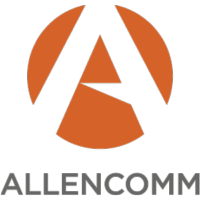Are You Effectively Onboarding New Employees?
Onboarding is an important part of any business’s success and budget. Success in the short term comes from filling vacant positions or filling new roles as soon as possible. Bringing a useful skillset to work on projects is vital, but those skills need to come from a new employee being a good fit for their team and your company.
Integrating these new hires into their role means more than handing them a manual, shaking hands with management, and showing them where the coffee pot lives. Companies as a whole lose a lot of new recruits. Some experts have conducted surveys that show approximately 30% of job seekers have left a job within the first 90 days, citing company culture and the day-to-day job not meeting expectations as two of the most common reasons for leaving. Losing one in three of recruited employees by not integrating them successfully is something that can be specifically addressed by improving the onboarding experience.
Beyond just the vital need to keep roles filled and projects going, onboarding a new hire can also be an expensive process. The easily identified costs of equipment, as well as time spent recruiting and interviewing, don’t tell the whole story. Hidden costs [1], like loss of productivity until the role is mastered as well as the time spent by the new employee, their mentors, and their trainers, contribute to a larger dollar sign attached to a budget line item.
Why Use Custom eLearning In Onboarding?
But why should you use a hybrid onboarding system? Before we can look at the benefits of integrating custom eLearning into your onboarding plan, let’s look at the benefits of eLearning as a method. eLearning provides access to training material and tools at the time the employee needs them, not only when it’s convenient for their trainer. Extended availability allows for the employee to have access to important information not just in the initial onboarding period but for use and review whenever they find it is needed. This increases the flexibility, engagement, and effectiveness of the training.
Microlearning is another significant benefit of custom eLearning. Microlearning enables learners to select and use assets most applicable to their current needs on whatever device is most handy, making the training even more relevant to their work. Giving your employees access to the tools they need when they need them can be especially helpful to defray the hidden costs of onboarding mentioned earlier.
How To Use Hybrid Learning In Onboarding Training
But if eLearning is so great, why take a hybrid approach? Looking back at the reasons that 30% of new hires don’t stick around, we find incompatible company culture or unmet role expectations near the top of the list. Having a real-time mentor to ease the employee’s transition is a huge benefit. Penn State [2] gives a useful definition of hybrid learning that describes the student’s learning experience and demonstrates how it could be useful for a business’s onboarding needs.
Simply put, hybrid learning is a combination of in-person, traditional instruction with remote digital learning. The reduction in needed learning time, increased effectiveness, and increased flexibility are all benefits that any manager would love to implement for their team.
There is also the benefit of synchronous and asynchronous [2] instruction. Having face-to-face synchronized meetings to facilitate training gives the new hire time to ask questions as they appear and helps the trainer to tailor their instruction to the learner’s needs. This may also be accomplished through online chats in which the instructor and learner are both participating at the same time. Asynchronous instruction allows the trainer to more effectively spend time creating training material that is going to be used over and over for each new hire. Condensing the course and only having to prepare it once instead of presenting it each time, improving effectiveness and efficiency, and matching Penn State’s definition is a great goal.
Bringing It Together
We’ve seen how expensive and essential onboarding is for a company. Lowered costs through increased employee retention, more effective use of learning content budget, and effective instruction are why implementing hybrid learning programs is a great way to achieve success. Flexible training tailored to employees’ needs combined with face-to-face mentoring is why hybrid onboarding should be a serious consideration for any company.
References:
[1] The Costs of Training New Employees, Including Hidden Expenses
[2] Glossary
Stay connected with us on social media platform for instant update click here to join our Twitter, & Facebook
We are now on Telegram. Click here to join our channel (@TechiUpdate) and stay updated with the latest Technology headlines.
For all the latest Education News Click Here
For the latest news and updates, follow us on Google News.

